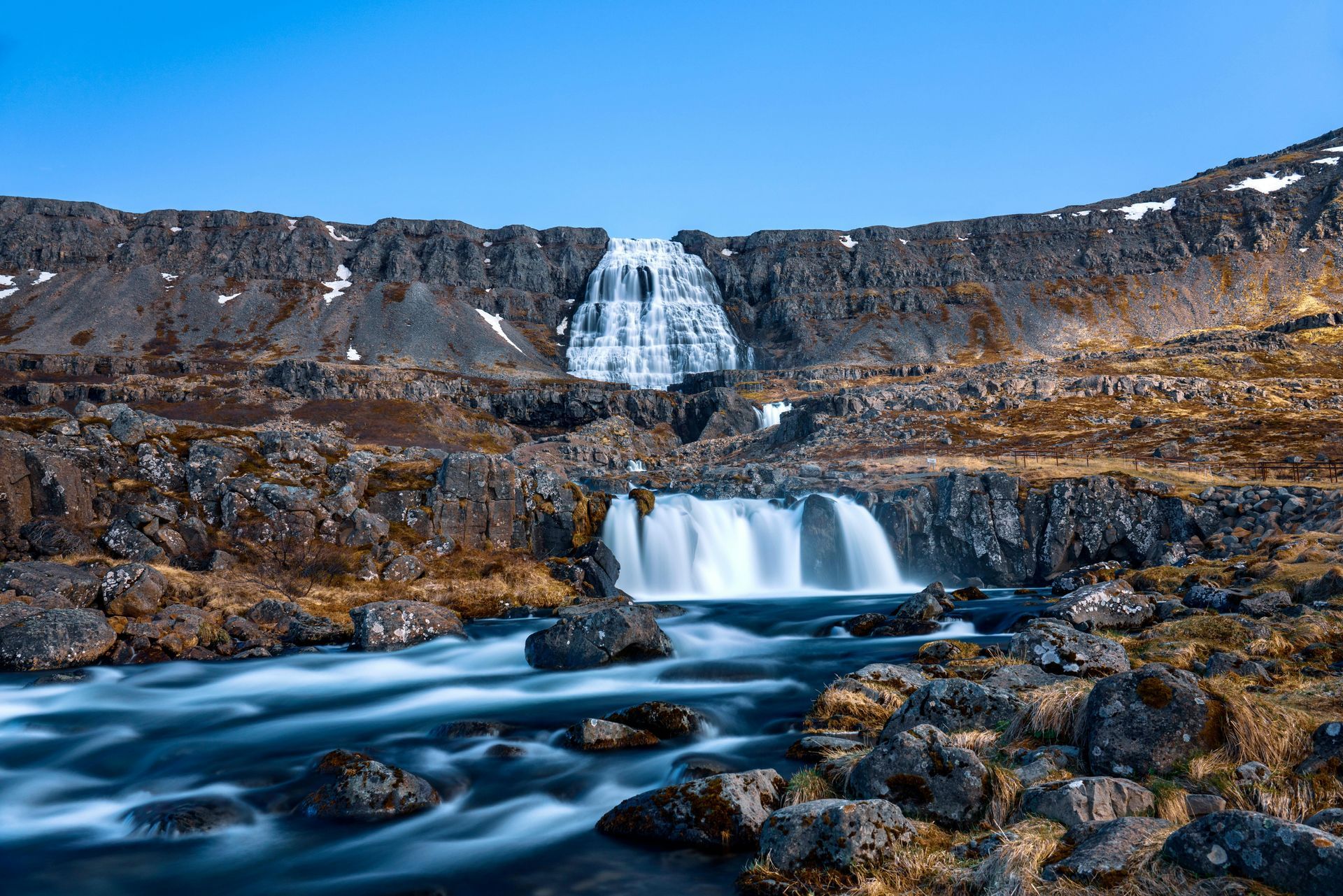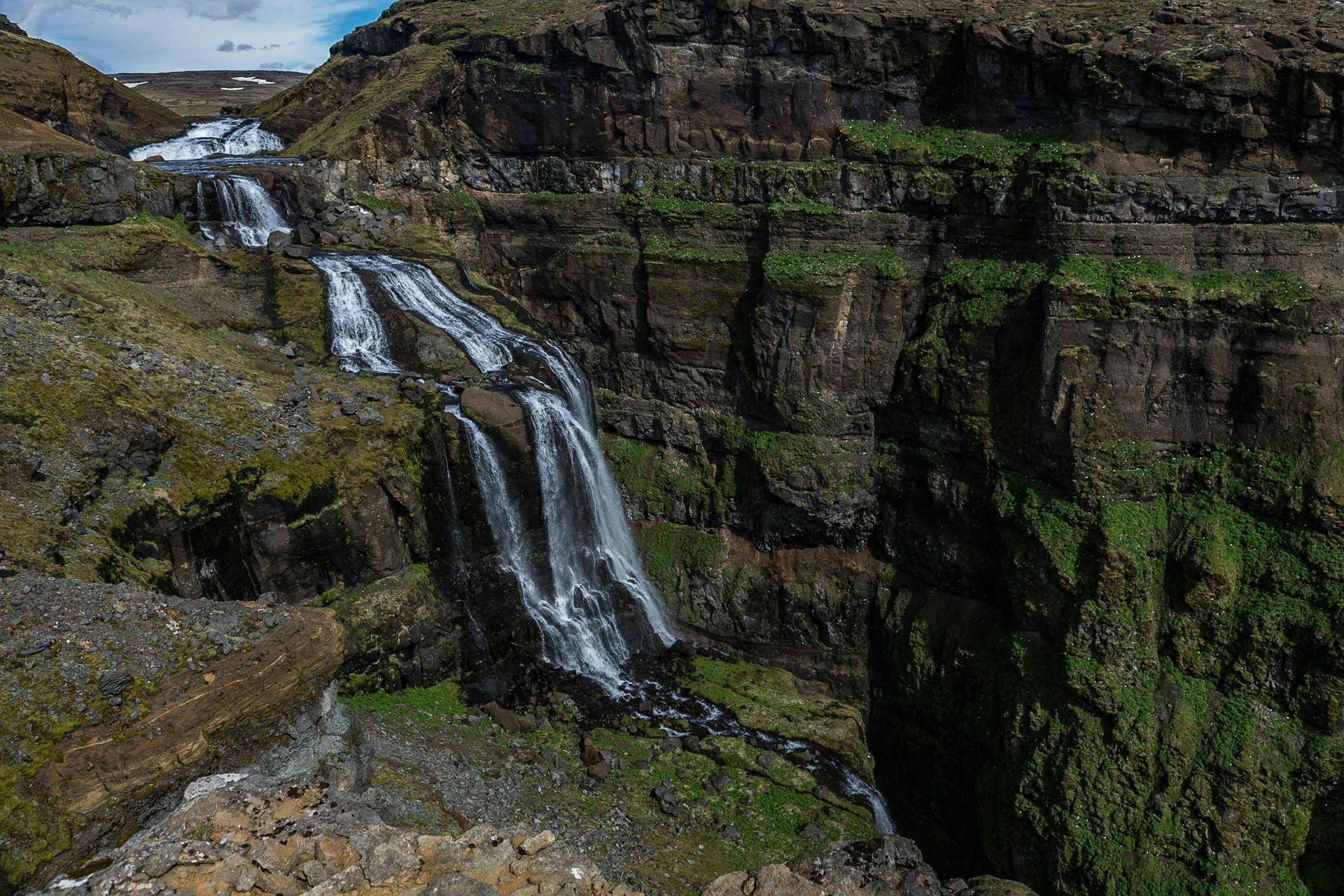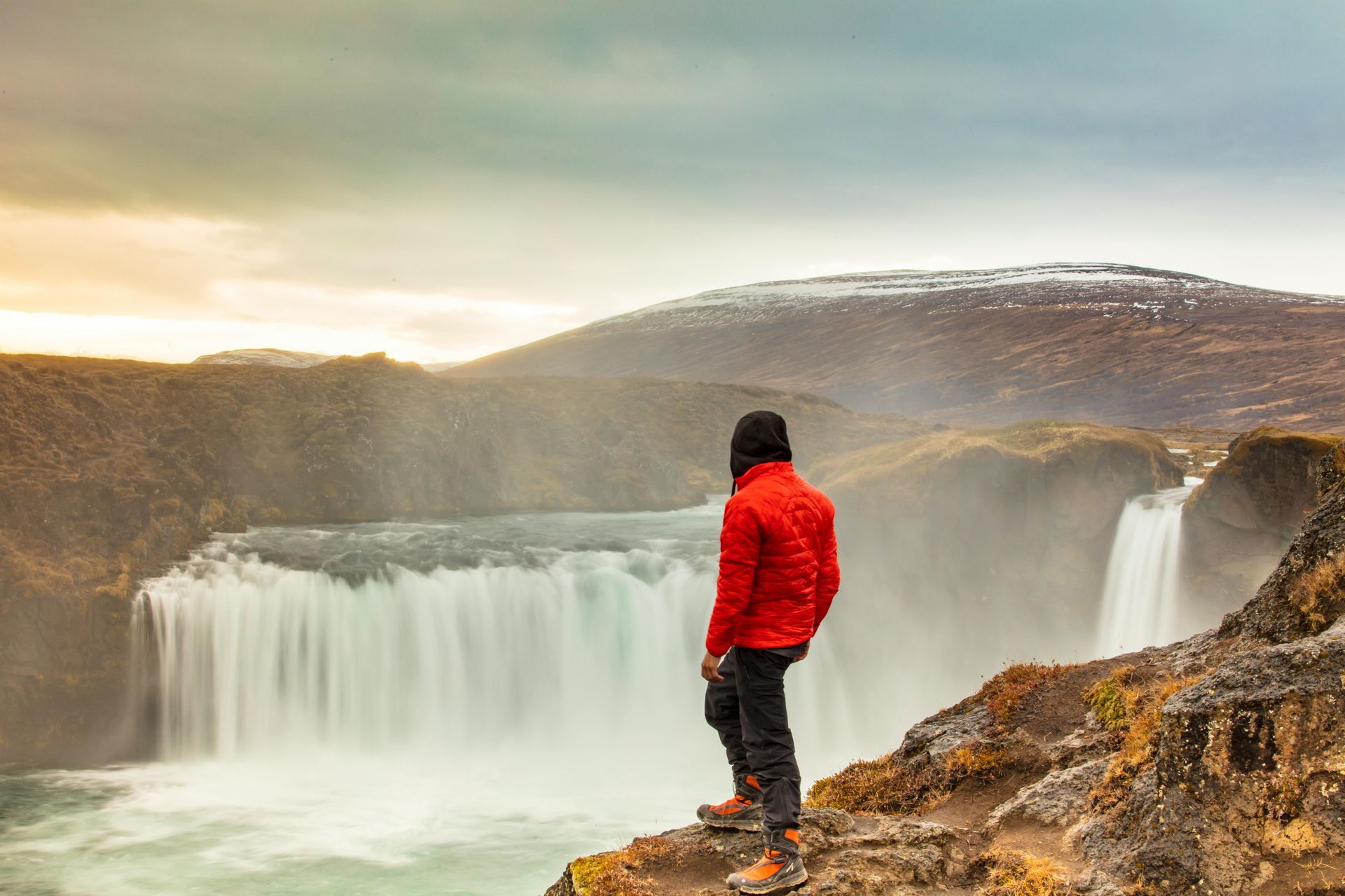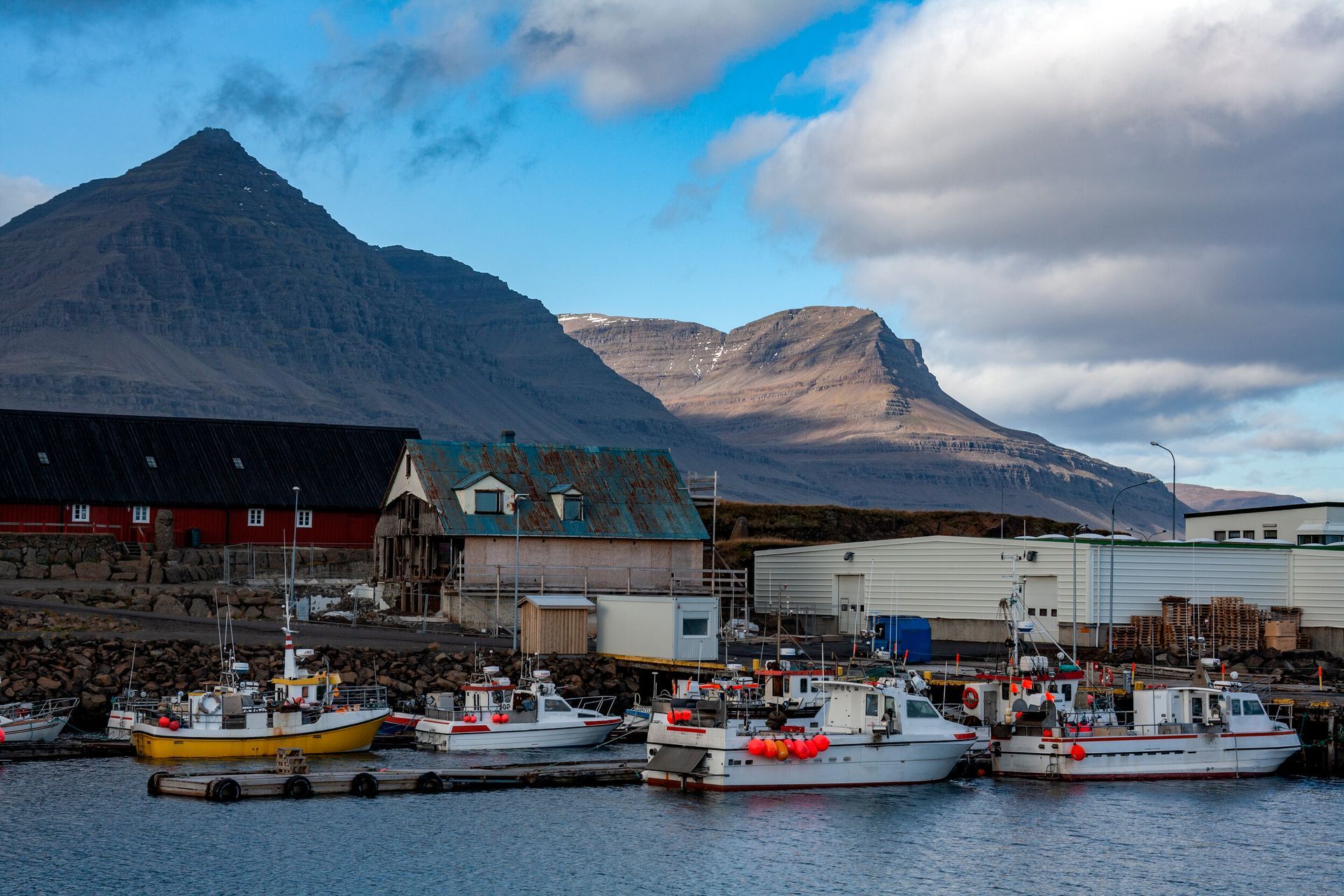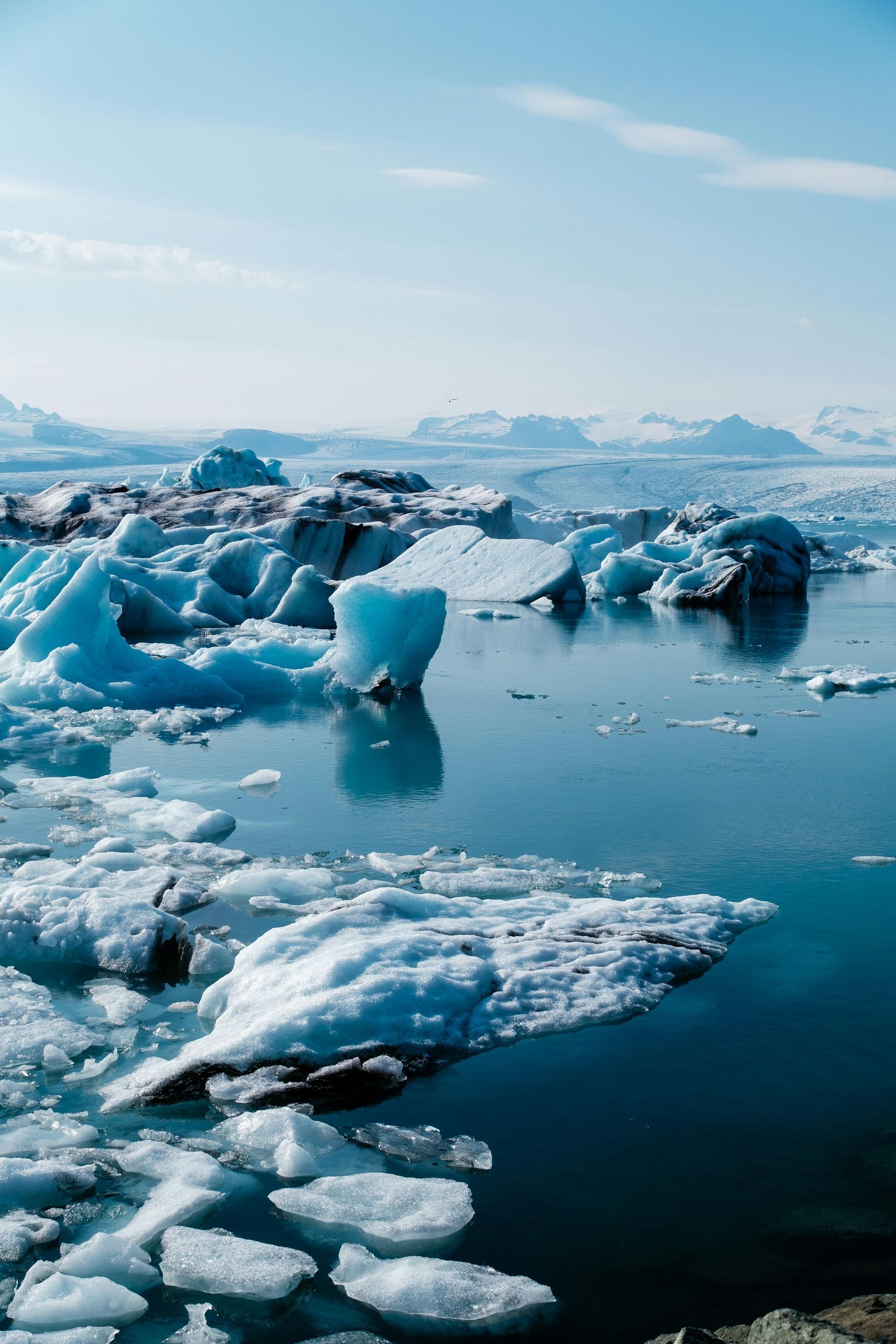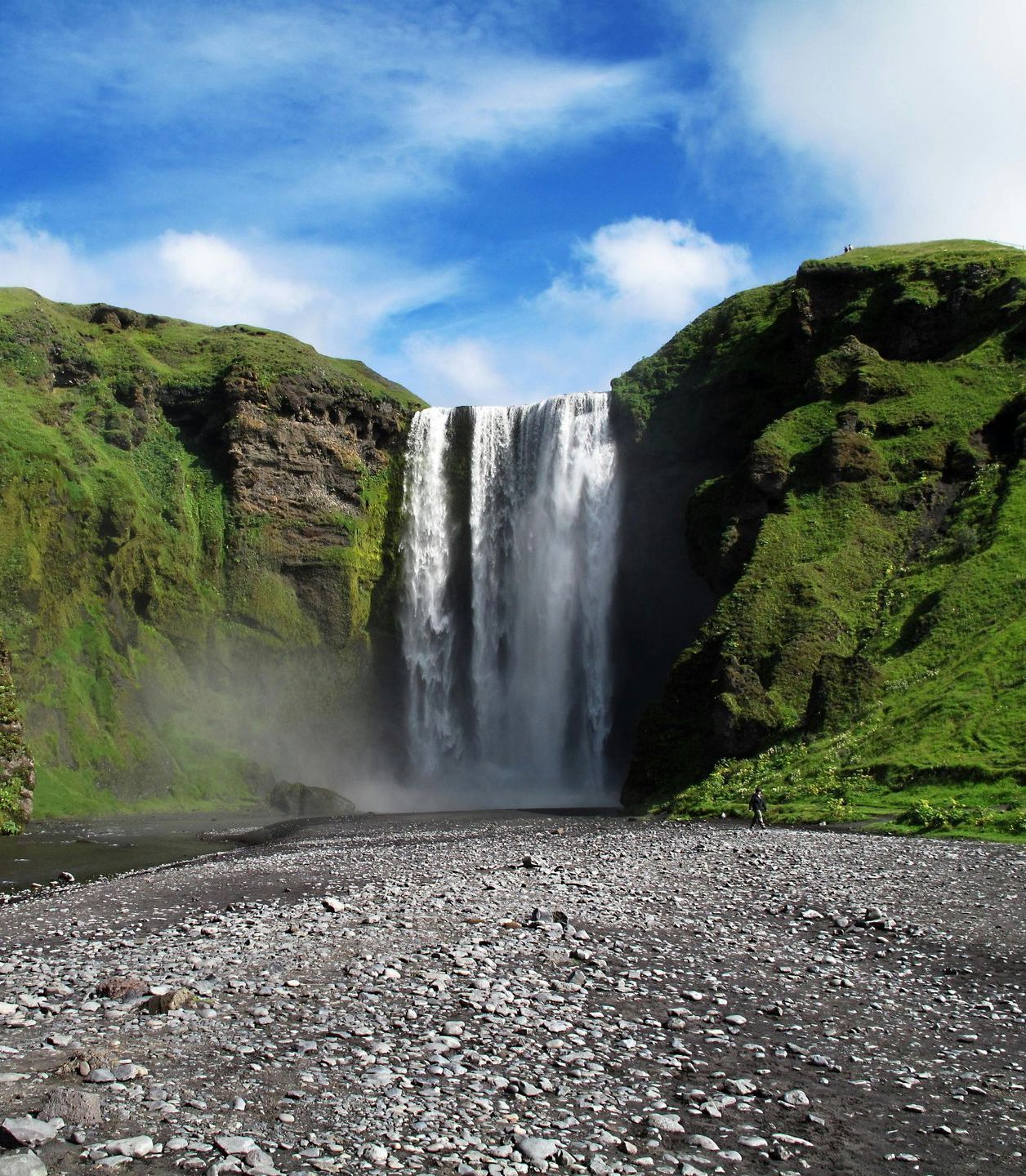When to Visit Iceland | Seasons and Weather
Iceland is an all-year-round destination. The weather is mild throughout the year, meaning the winters are not that cold, but also the summers are not that warm. Many visitors are surprised with the winter weather, as you can experience much colder temperatures in several states of the United States. Likewise, people are often surprised at how chilly the summer can be, but it can provide a welcome respite from intense heat elsewhere in Europe. You might get sunny and clear days in winter in Iceland, but you might also get some snow in the summer depending on your luck.
The main difference between the winter and the summer is the amount of daylight hours, as the summers are blessed with 24 hour daylight but in wintertime it’s pretty dark, however the auroras might light up the sky. The shortest day of the year, the winter solstice, is December 21st. The longest day, the summer solstice, is June 21st. In between those two dates the days are either getting longer or shorter, by a couple of minutes each day. Equinox takes place on March 21st and October 21st, where the day and night are equal in length.
Each season is attractive in its own way, so to help you decide when to visit Iceland, here is an overview of what to expect in Iceland in winter, spring, summer or fall, both with respect to the weather and the main attractions.
Iceland in Winter
The winter in Iceland is the longest season, from November until March. Although technically an off-season (besides Christmas and New Years), there are still many visitors that choose to travel in Iceland in winter, and some prices are lower at this time of year.
From November to December the days are getting shorter but after Christmas the days start getting longer again. December and January are the darkest months of the year. However, at this time it’s also likely that there’s a blanket of snow on the ground which brightens up the days, the country is covered in festive Christmas lights and at nighttime the Northern Lights dance in the sky. The shortest days also have a beautiful pink light as it’s a continuous golden hour for the few hours that the sun is up.
The Northern Lights can be seen from anywhere in the country, including Reykjavík, but it’s better to try to watch them where there’s no light pollution. Sometimes they flicker across the sky for merely a few seconds, and at other times they spend the whole night ebbing and flowing in shades of green, white, pink and purple. In order to see them they need to be taking place, it needs to be dark and the sky must be clear, or only partially cloudy. The Northern Lights take place all throughout the year, they simply cannot be seen in the summertime because it doesn’t get dark then. They are the biggest attraction in winter, but you shouldn’t count on seeing them, they’re more like a bonus to all the gorgeous sightseeing you can do. The temperature during wintertime in Iceland varies, but on average it’s somewhere between 23-41°F (-5°C to +5°C). Iceland has a very dry climate, that’s not to say it doesn’t rain (it rains and snows quite a bit), but there’s not much humidity in the air. So even though it’s 14°F (-10°C), which is about the coldest it gets in Reykjavík, then you can dress it off and the cold doesn’t sneak its way into your bones like it does in more humid countries. What you need to be prepared for is the windchill. celand is a windy country, and the windchill can make it feel a lot colder than the temperature tells you.
Iceland’s winter weather is very unpredictable and constantly changing. You might be lucky and get several beautiful crisp sunny days in a row, or you might experience one of the country’s winter blizzard storms, when roads close down and people are encouraged to stay at home. However, it’s always warm and toasty indoors in Iceland, since the houses are built to withstand the cold and the heating comes from geothermal hot water and is practically free. It’s important to dress in many layers, so you’re able to take layers off when you go inside, and add them on when you go outside. It’s also important to be flexible, and adapt to changed plans in case the weather doesn’t play along with your schedule.
Icelandic winters can be absolutely magical. Besides the auroras, the landscape can offer a frozen winter wonderland, with half-frozen waterfalls and gorgeous natural blue ice caves. There’s one place where you can visit a natural glacier ice cave in summer, but ice caving is mostly reserved as a winter activity as the caves are much more spectacular in wintertime. For those looking for some active sports or adrenaline, there is a selection of glacier hikes, ice climbing, cross-country and downhill skiing and snowmobile tours to go on.
If it all gets a bit too chilly, then there are several hot tubs, spas and saunas to take advantage of - nothing beats relaxing in a warm lagoon with a drink in one hand and the northern lights dancing above. Reykjavík’s bars and restaurants are also worth checking out, as the nightlife can also get pretty steamy!
Iceland in Spring
April and May are considered the spring months in Iceland. These months are a shoulder-season in Iceland, where you won’t have as many tourists as in the summer and prices may be a little cheaper, with more availability for hotels and tours.
By April most snow is normally gone from Reykjavík and the south coast of Iceland. The north part of the country is likely to still be covered in snow, or at least its mountaintops. The average temperature is just above freezing, or between 32-41°F (0-5°C). There may still be the occasional snowy days, but the flowers start to pop up and the weather is generally milder than in wintertime. In May the average temperatures have risen up to 41-50°C (5-10°C). In recent years May has had unusually mild weather, with temperatures going up to 77°F (25°C), but you can not count on that to happen.
Road closures are uncommon at this time of year for the ring road, so you can drive past the snow-capped mountains while witnessing the first signs of summer blooming. During these two months you’ll notice the days getting longer, at the start of April the sunset is around 8:30 PM but by the end of May the sunset is around 11:30 PM. In April and until mid-May it still gets dark for a few hours each night, so it is possible to see the Northern Lights when the skies are clear, but still enjoy long daylight hours to sightsee in the daytime.
Easter takes place in either March or April yearly, during which the popular free-to-attend rock music festival Aldrei fór ég suður takes place in Ísafjörður in the Westfjords. It’s a fantastic destination to combine local music culture with sea kayaking or skiing at their local ski resort.
Some of Iceland’s most famous residents show up in April, the ever-so-popular puffins arrive from the sea in April, along with many other migrating bird species such as the golden plover and the arctic tern. The first puffins and the golden plovers start arriving in March but if you’re visiting Iceland for the birdlife it’s safer to arrive after mid-April and plan to visit the coastal cliffs. The best areas to see the birdlife are in the Westman Islands, the East fjords or the Westfjords, especially the cliffs of Látrabjarg.
Visit Iceland in the springtime to enjoy long days that can be filled with winter or summer activities, including but not limited to horseback riding, whale watching, sightseeing, glacier hiking and bird watching but still have the chance to spot the auroras at night, without the tourist crowds of the summer.
Iceland in Summer
The Icelandic summer months are June, July and August. Throughout these three months there is 24/7 daylight. Even though the sun may set sometime around midnight, the sunrise is only about 3-4 hours later and in between sunset and sunrise the country is bathed in twilight golden hour colors. You’ll be sure to see some of the most spectacular pink and red sunset skies in Iceland in summertime, that is if you’re awake at that time!
These months are perfect for long road trips in Iceland. You’ll never need to get anywhere “before it gets dark” since it never gets dark. So you can make the most of the long days and view stunning waterfalls or black sand beaches late at night, or very early mornings. The country is blanketed with green grass and purple lupine, providing a stark contrast to the black sands and the white glaciers.
In late June, or sometimes even early July, the roads to Iceland’s interior open. This is a stunning but rugged area of the country, where there are no towns and hardly any gas stations or shops, but instead there’s raw, wild and somewhat untouched beautiful landscape. Popular highland areas include the multi-colored Kerlingarfjöll and Landmannalaugar geothermal areas as well as the lush and green Þórsmörk valley. The most remote areas of Iceland, the interior highlands and the nature reserve Hornstrandir in the Westfjords, are only accessible in summertime.
The average temperature is only about 44-55°F (7-13°C) in the summertime, but in recent years there have been several days where the temperature hovers around 77°F (25°C). The weather tends to be sunniest and warmest in the North and East of Iceland, so be sure to check your weather forecast before hitting the road.
In summer there are many activities on offer, and it’s still possible to do some winter activities such as glacier hiking and snowmobiling. Summer is also perfect for hiking, river rafting, quad biking, horseback riding, caving, sea kayaking and whale-watching.
Iceland in Fall
September and October are the fall months in Iceland. The wind and rain picks up in these months, but so do the changing colors of nature. Large areas of Iceland are covered in low birch wood, so there are some stunning autumn leaves to be seen at popular destinations such as the Golden Circle. At this time of year, like in the spring, the days are long but the auroras come out at night to play. There are also fewer tourists, and lower prices, but the migrant birds have left the country by this time. Most tours are still available, such as horseback riding and whale watching, and most roads are open and accessible.
The first snowfall of the winter often occurs in September or October, but the snow
doesn’t stick around for long. That can also provide gorgeous contrast to the red, green, yellow and purple leaves. This is harvest time, and you’ll be able to pick wild berries in the moss covered landscape, including crowberries and blueberries. Temperatures start dropping, but hover around freezing point, similar to springtime at 35-50°F (2-10°C). There’s often the first storm of the winter season, but it tends to be a rainstorm rather than a snowstorm, so be sure to check the weather forecast daily if you’re driving on your own.
Farmers gather their sheep at this time, so you might be able to witness the traditional way to do so, which is called “réttir”. All the farmers from neighboring counties, along with their families and friends, gather all the sheep that have been roaming free in the summertime to one area and then sort them together. This is a festive occasion that’s fun to witness, or participate in.
So which season do you find most interesting? No matter which one you pick, you’re sure to have an unforgettable time during your stay in Iceland, and we are happy to help you plan your dream vacation here at Vala Adventures.
